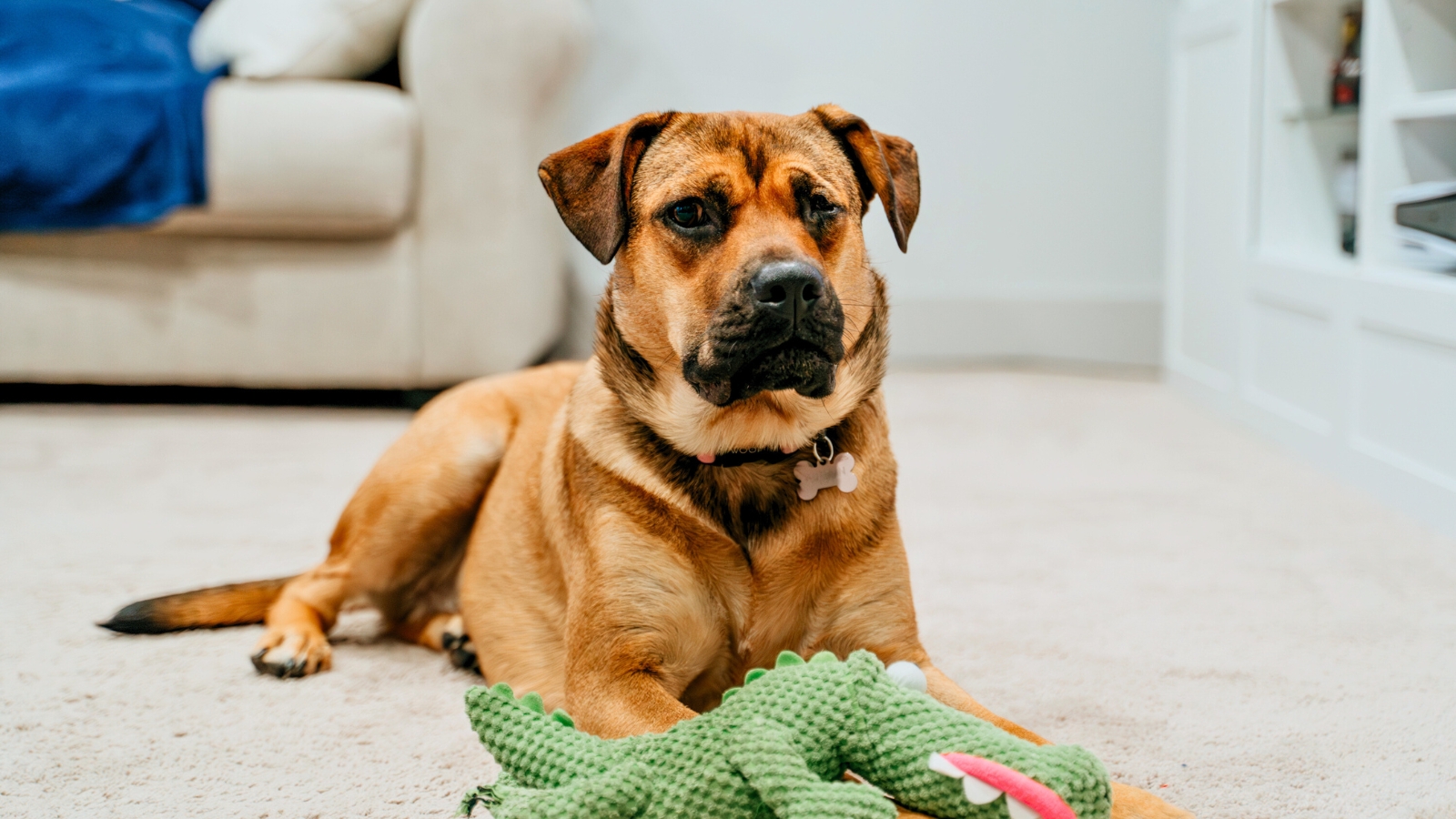Animals are adept at using multiple senses. Dogs and cats rely heavily on their sense of smell and hearing to navigate their surroundings, so by making use of these senses, we can help our pets feel safe while familiarizing themselves with their new home.
Practicing patience and keeping your home environment consistent are important when working with your visually impaired pet. It can take a new pet months to adjust and learn where things are in their new surroundings.
Visually impaired companion animals can live a full and happy life with you. In this guide we’ll provide some tips to help your visually impaired pet adjust to life in your home.
Utilize Their Sense of Smell
Animals rely heavily on their sense of smell. To help your pet learn about the different areas in your home, you can use different scents to assist them in identifying each area.
When choosing scents, we recommend consulting with your veterinarian to make sure they’re safe for your pet. Since animals have very sensitive noses, only use small amounts of the scent and always make sure your pet can’t ingest the scent.

Help Your Pet Orient Themselves with Textured Surfaces
Using textured materials, such as rugs to mark areas in your home, can help your pet learn where certain obstacles and entryways are around your house.
You can also use long rugs to help define a pathway for your pet, like placing a rug that goes from their food bowl to their bed or on common routes they take.
When outside, doormats, wind chimes and items like mulch or decorative bricks can help guide your pet around the yard and identify where the door is.
Connect Through Hearing

Since your pet has a hard time seeing you (or they can’t see you at all), it’s important that your pet can hear you and other animals approaching, to avoid startling them. To ensure your pet knows where you or other pets are, you can speak to them as you approach, attach bells to your other pet and wear things that make noise like jingle bell bracelets and flip-flops.
If you’re approaching your visually impaired pet while they’re lying down, say their name a few times loudly to let your pet know you are coming close. You can also take harder steps on the ground to help them feel the vibrations as you approach them.
To help your pet easily hear and locate where their water is, you can use a water fountain because it produces an identifiable sound.
Craft a Safe Home
Since animals who are visually impaired will often bump into objects around the home or may not be able to detect hazards like protruding objects or gaps, we recommend always checking for hazards in your home. One way to detect risks is to get down on your hands and knees to see the world from your pet’s perspective. Are there any sharp objects or corners that could hurt your pet if they walked into them? Are there any drop offs from landings or gaps in railings that your pet could fit through?
Consider using things like baby gates and corner protectors to help prevent injuries.
The Power of Consistency in Their Environment
Keep your pet’s environment consistent. Try not to move around furniture and other items in your home unless necessary, as your pet will have to work to learn the new placement of items.
Let your pet navigate themselves in their new surroundings, so they can make a mental map of the layout. Do not pick up your visually impaired pet in a new place, as this can be disorienting, confusing and sometimes upsetting for them.
To help your pet adapt to their new home, create a “home base” where they can have a resting place, food and water near each other. You can even use a crate or mat as a home base. If you ever feel like your visually impaired pet is getting confused or needs to be picked up, you can always place them back on their home base to help them reorient themselves.

Other Things to Keep in Mind
When out in public, other people might not realize your pet is visually impaired. Consider using something like a bandana that says “blind” or “vision impaired” to help avoid scenarios where your pet may be startled by a sudden obstacle or someone petting them.
Lastly, it’s important to keep in mind that your pet’s eyesight can change as they age – even fully sighted animals can become visually impaired within their lifetime.
With patience, understanding, adjusting your environment, always watching for hazards and creating a home base, your visually impaired pet will live a fulfilling and happy life with you.
For more resources and advice on how to cultivate good interactions with your companion animals, check out our Behaviour Resources Page

